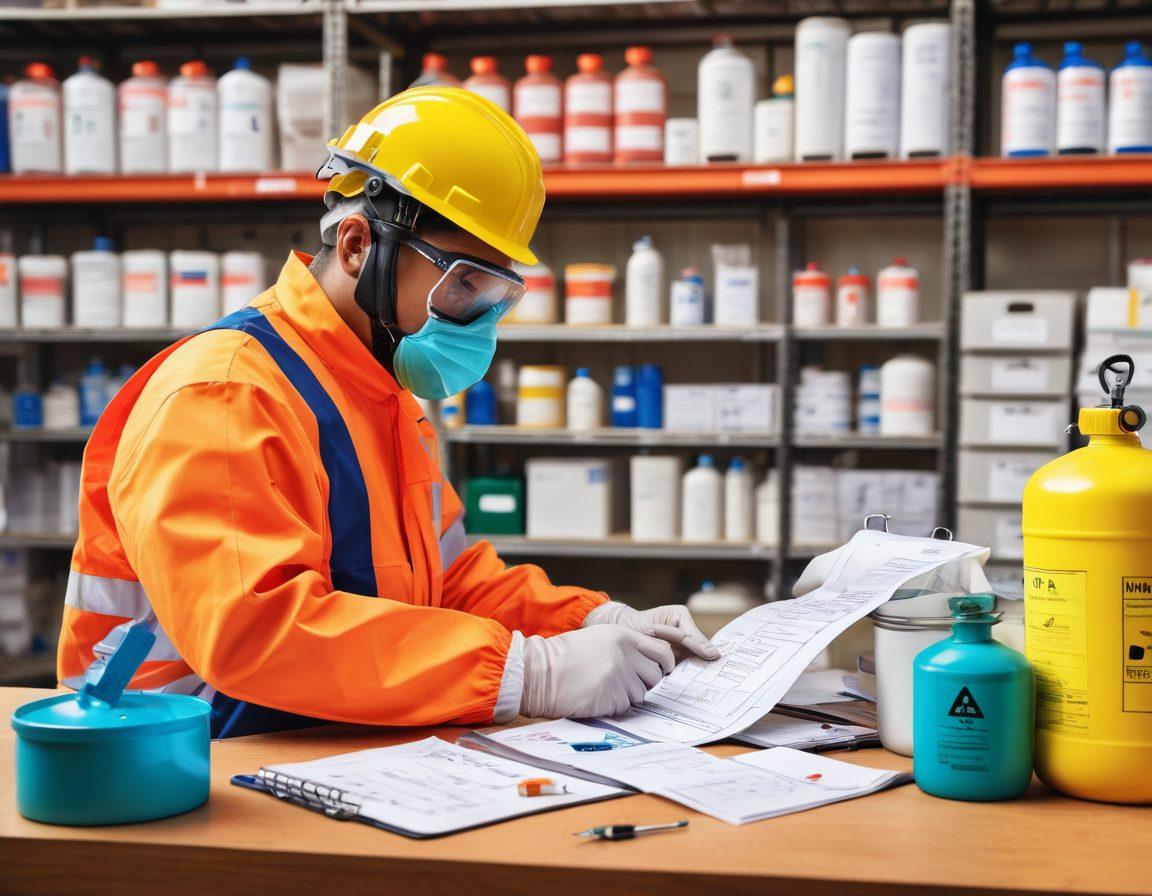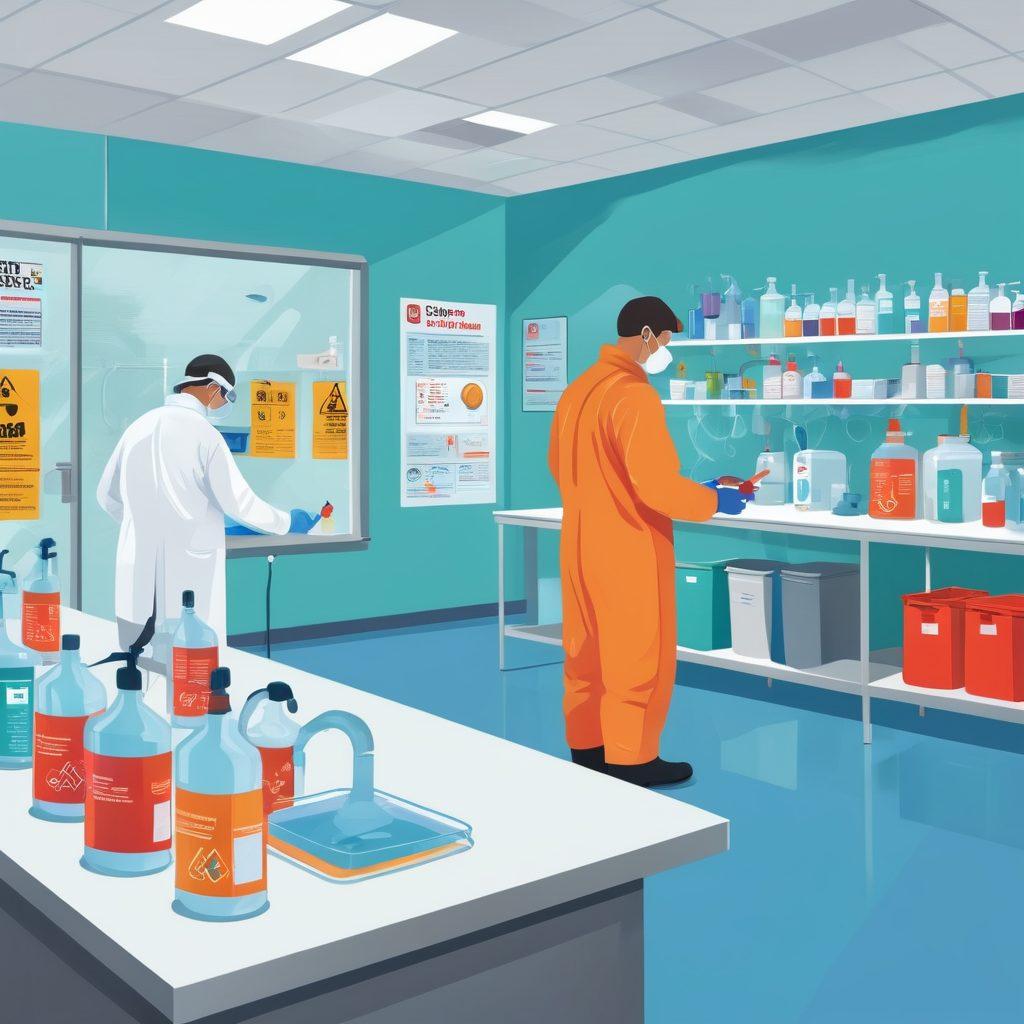Unlocking WHMIS: Your Ultimate Guide to Workplace Chemical Safety and Compliance
Have you ever wondered what lurks behind the cryptic labels on chemical containers at your workplace? What if you could decode these labels to understand their hazards and ensure your safety? Mastering Safety Data Sheets (SDS) is the gateway to unraveling the mysteries of chemical safety. These documents, often overlooked, are your best friends in mitigating potential dangers and ensuring you and your colleagues remain safe. Let's dive into the world of Safety Data Sheets and unlock their secrets, one section at a time.
Safety Data Sheets, formerly known as Material Safety Data Sheets (MSDS), are essential tools in hazard communication. They are like a detailed bio of every chemical used in the workplace, offering critical information about chemical hazards, safe handling, and protective measures. Each SDS comprises 16 sections, including information on the identification of the substance, hazard identification, first-aid measures, and fire-fighting measures, among others. By thoroughly understanding an SDS, you empower yourself with the knowledge to handle hazardous materials safely and comply with occupational safety regulations.
Imagine working in an industrial setting without the guidance of SDS - like navigating through a dense forest with no map or compass. Without these crucial documents, employees would have much higher risks of exposure to dangerous goods and chemical hazards. Reading and interpreting safety data sheets not only help in understanding workplace hazards but also play a pivotal role in safety training and hazard awareness. 'Knowing is half the battle,' as the saying goes. This couldn't be truer when it comes to chemical safety, where hazard symbols and instructions must be second nature.
Understanding SDS is not just about knowledge, but about action. Regulatory compliance, such as adhering to WHMIS (Workplace Hazardous Materials Information System) and the Globally Harmonized System (GHS), ensures that companies maintain up-to-date SDS for all chemicals, perform compliance training, and implement effective risk management strategies. These protocols bridge the gap between hazard prevention and emergency response, providing a structured plan for maintaining workplace safety. Incorporate frequent reviews of SDS into your safety protocols, and conduct regular safety training to keep everyone well-versed in chemical hazards and safety guidelines.
In the grand scheme of workplace health and safety, Mastering Safety Data Sheets is akin to mastering the fundamentals of any high-stakes game. It builds a culture of proactive safety, where employees are informed, prepared, and confident in handling chemicals. Strong hazard communication, supported by comprehensive safety data sheets, is a formidable tool in achieving WHMIS compliance and ensuring workplace safety. Whether you're in industrial safety, occupational health, or just starting your safety training journey, remember: the key to unlocking chemical safety lies within the pages of an SDS. Your workplace safety—and indeed, your life—could very well depend on it.
Essential Hazard Communication Strategies for a Safer Workplace
Imagine walking into your workplace and feeling absolutely confident that every potential chemical hazard is well-communicated and understood by everyone. This sense of security is not just a fantasy but a reality achievable through effective hazard communication strategies—fundamental for workplace safety. Understanding WHMIS (Workplace Hazardous Materials Information System) and applying essential strategies can greatly enhance chemical safety and compliance. It's not just about ticking off regulatory boxes but fostering an environment where employee safety is paramount.
The cornerstone of effective hazard communication is the accurate and accessible dissemination of information. This begins with detailed Safety Data Sheets (SDS), previously known as Material Safety Data Sheets (MSDS). These documents are gold mines of information, outlining everything from the chemical's properties and hazards to first-aid measures and spill-handling protocols. Ensuring that every employee can easily access and understand these SDS is a critical step towards WHMIS compliance. But here's where it gets interesting: can you think of the last time you actually saw a co-worker read one? If not, it might be time to revamp your approach to hazard awareness.
Storytelling can be a powerful tool in hazard communication. Imagine John in the manufacturing department, who once handled a chemical without checking its SDS first. The result? A minor yet avoidable injury that could have been prevented. Sharing real-life stories resonates more than sterile data alone. It's about turning dry facts into engaging narratives that stick. During safety training sessions, incorporating anecdotes and case studies about workplace hazards can make a lasting impact. Your goal is to transform abstract concepts into tangible experiences that underscore the importance of compliance training and protective measures.
To further anchor hazard awareness, never underestimate the power of effective labeling and hazard symbol usage. GHS (Globally Harmonized System) has standardized these symbols, ensuring that the risks associated with dangerous goods are universally understood. But, clear and consistent labeling goes beyond slapping a sticker on a container. Employees must be trained to recognize and interpret these symbols correctly. Are the hazard symbols prominently displayed and adequately explained during inspections or audits? Visual cues and rigorous training shape a robust culture of occupational health and workplace health and safety.
Lastly, embed regular safety protocols and emergency response drills into your workplace routines. These aren't just compliance obligations but critical components of risk management and hazard prevention. Incorporate a blend of formal safety training sessions and informal, yet informative, safety moments where employees can ask questions and discuss hazard classification. Regular drills not only refine response procedures to potential industrial safety incidents but also reinforce the importance of proactive hazard management. The key takeaway is that workplace safety is a dynamic process—a living, breathing culture that evolves with ongoing efforts in communication, training, and real-world practice.
From GHS Symbols to Compliance Training: Comprehensive Guide to Chemical Safety Protocols
When was the last time you considered the invisible threats lurking in your workplace? Whether it’s the cleaning solution under the sink or the industrial chemicals handled daily, understanding WHMIS (Workplace Hazardous Materials Information System) is a crucial part of ensuring workplace safety. In this comprehensive guide, we will delve into the depths of chemical safety protocols, from GHS symbols to detailed compliance training, laying the foundation for a hazard-free work environment.
Navigating chemical safety can often feel like entering a labyrinth of labels, paperwork, and complex regulations. Luckily, with WHMIS at our side, the intricacies become manageable. Safety data sheets (SDS), also known as material safety data sheets (MSDS), provide critical information about hazardous materials. By familiarizing yourself with SDS documents, you empower yourself and your colleagues to identify and manage chemical hazards effectively. In the words of environmental health experts, 'Knowledge is the best defense against danger.'
The Globally Harmonized System (GHS) introduced standardized hazard symbols that simplify the identification of chemical hazards. Think of these symbols as a universal language of safety, helping everyone — from seasoned professionals to entry-level workers — recognize potential dangers quickly. For instance, a skull and crossbones icon instantly signals a toxic substance, necessitating protective measures. Could understanding these symbols be the key to workplace health and safety? Absolutely!
Beyond symbols and data sheets, WHMIS compliance requires thorough safety training and regular refreshers. Compliance training ensures that every employee is well-versed in the handling, storage, and disposal of dangerous goods. ‘A well-trained employee is a safe employee’ isn’t just a catchy phrase — it’s a mantra for occupational safety. From detailed emergency response protocols to everyday hazard prevention techniques, comprehensive training can be the difference between a safe workday and a catastrophic incident.
Why is regulatory compliance so critical? First and foremost, it keeps people safe. But it also builds a culture of risk management and continuous improvement. By adhering to stringent chemical safety regulations, businesses not only protect their workforce but also enhance operational efficiency and reputation. Remember, safety isn’t a one-time goal but an ongoing commitment. Are you ready to champion workplace health and safety by unlocking the full potential of WHMIS in your organization?


